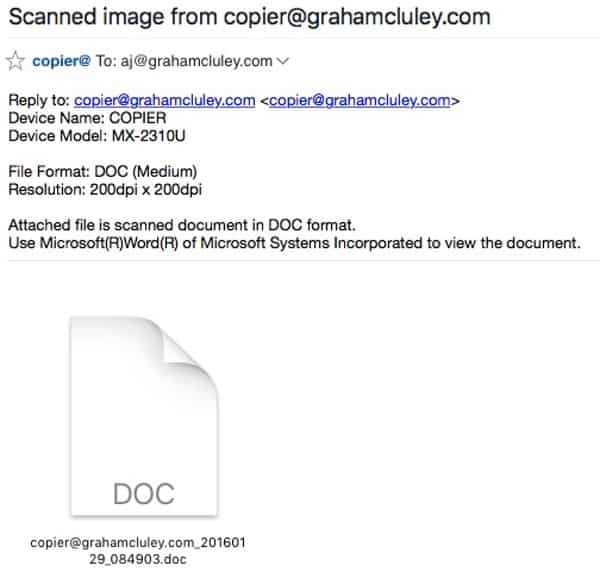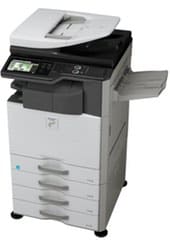Be careful what you click on- emails from your fax or copy machine coming through? could be dangerous. If you have printed or faxed documents coming via email, be sure you know what YOUR machine headers should look like. Same is true for voicemail. Most phone systems will email you copies of your latest voicemail messages- don’t click on one unless you know it came from your system.
This from security researcher Graham Cluley
Email from your photocopier? It could be a malware attack
Twenty years ago, the first Word macro malware spread across the planet.
Embedded inside a Word document, and rather unhelpfully given a kick start by being shipped on a Microsoft CD ROM, the Concept virus proved that people were much more willing to open unsolicited .DOC files than something more obviously suspicious like an .EXE attachment.
It would be great to think that after two decades of fighting malware in Word documents, users would have learnt to be more cautious or – heaven forbid – Microsoft might have rethought the wisdom of embedding a macro programming language inside the Word document format.
But macro malware hasn’t gone away, as today’s example shows.

Someone is spamming out malicious emails, pretending that they come from your photocopier.
The emails which appear to come from copier@example.com (where example.com is your email’s domain name), claim to be a scanned image from your printer.
 In the case of the malicious email I received, the message pretends to be from a Sharp multi-functional printer called the MX-2310U.
In the case of the malicious email I received, the message pretends to be from a Sharp multi-functional printer called the MX-2310U.
Like many modern office printers these days, the MX-2310U doesn’t just limit itself to printing. It can also fax, photocopy and scan.
I, of course, don’t own a Sharp MX-2310U, and it definitely isn’t attached to my network. So there was no way I was going to open the unsolicited .DOC file I had been sent.
Which is just as well, because if I had launched the attachment then Microsoft Word would have prompted me to enable macros.
